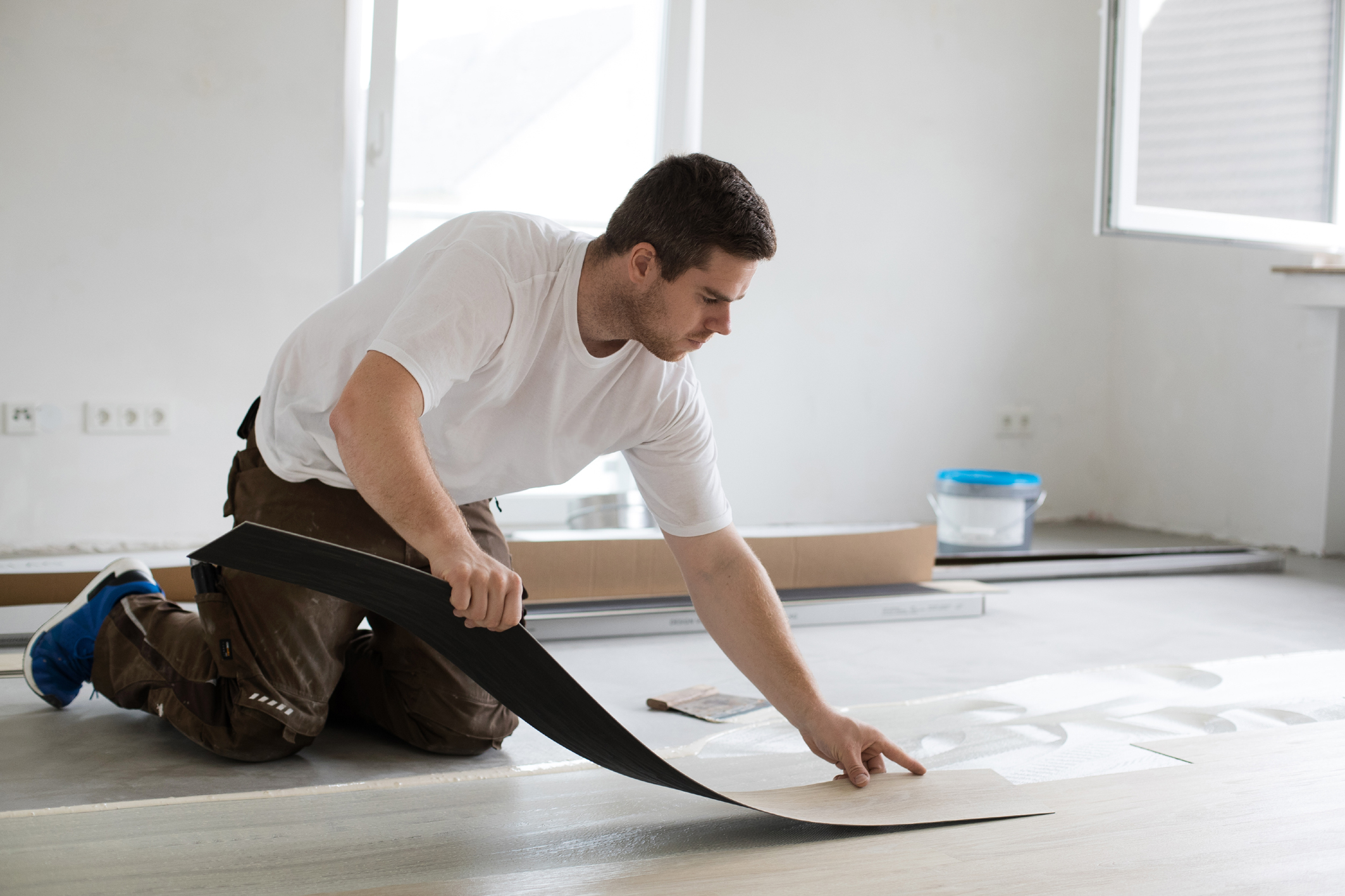A healthy facelift for your home
Watch out for EMICODE®-certified building materials
New is beautiful – no matter whether it’s a new car, computer, clothes or even a flat or house. But after a few years, even the most beautiful home is beginning to show signs of wear and tear. The only remedy is to give your home a facelift by repainting the walls or replacing the old floor covering. According to a survey conducted by IfD Allensbach in 2019, 8.95 million Germans – that’s more than one in ten – were planning to renovate their homes in the next two years. But if home owners want to be sure to live in a healthy environment, they must choose building and renovation products with the lowest possible emissions – easily recognizable by quality seals such as EMICODE®.
The ravages of time are taking their toll on everything, including apartments and houses. Often, the rental contract stipulates that tenants must carry out minor cosmetic repairs after a few years. However, whether or not the renovation work is necessary does not so much depend on specified intervals but rather on the actual level of wear and tear. Nevertheless, tenants and developers are equally interested in renovations that improve the comfort and quality of living. Every year, more than eight million Germans therefore plan to “rejuvenate” their homes in the foreseeable future as the above-mentioned study by IfD Allensbach has shown.
When undertaking a renovation project, you are well-advised to use building products with the lowest possible emissions. Floor coverings, fillers, adhesives and sealants as well as other building and installation products can release so-called volatile organic compounds (VOCs) that impair the quality of indoor air. Health complaints like headache and fatigue, but also allergies and breathing problems can be the result in rare cases. It is therefore best to use pollutant-free building products right from the start and to rely on quality labels. Products carrying, for instance, the EMICODE® EC1 seal have been proven to be very low in emissions. One look at the packaging is enough for consumers to know whether the product is safe to use and therefore suitable for home renovation.
If you don’t renovate the floor but build a completely new house, you need to consider a crucial factor before laying the floor covering. It’s the residual screed moisture in newly built houses that is sometimes underrated. If it is too high, it can reduce the adhesion of the flooring adhesive and, in the worst case, promote the later formation of mold and odor. New screeds are not always ready to receive flooring after four weeks – this is just the lower time limit. How quickly the screed dries strongly depends on factors such as air humidity, temperature and thickness of the screed slab. It is therefore best to have the substrate preparation done by a professional floorer. If you prefer to lay the floor yourself, you should at least ask an expert to check the residual screed moisture. Before bonding the new floor covering on top of the expertly prepared subfloor, it should be carefully cleaned. Make sure to sweep or vacuum off any remaining dust or dirt particles that may impair adhesion.
The importance of a healthy home should not be underestimated. People want to feel safe and comfortable in their own four walls. After all, we spend most of our time indoors, surrounded by walls, floors and ceilings. These days, newly built houses are increasingly airtight. As a result, the natural air exchange rate is decreasing. It is therefore all the more important that the indoor air we breathe is as unpolluted as possible. Eco-labels like the EMICODE® EC1 seal help us find the right building products – comparable to the organic labels for food products.
For more than 20 years now, GEV EMICODE® has been certifying the health and environmental compatibility of many different building products based on an internationally recognized evaluation system. The most stringent test criteria must be fulfilled before manufacturers are allowed to mark their products as “low-emission”. To ensure long-term compliance with the limit values, unannounced spot checks are carried out by independent test institutes. When using EMICODE®-certified products for renovation, you can “rejuvenate” your home and make sure it not only looks good but also feels good later.

Photo: GEV
Even the most beautiful home needs some cosmetic repairs after a few years. Renovations not only increase the quality but also the comfort of living. However, to ensure a healthy home, it is best to use EMICODE®-certified products – not only for floor coverings but also for other construction and installation materials. This ensures the lowest possible emissions and unpolluted indoor air after completion of renovation work.

Do You Have Questions?
If you have any questions on certain topics or want to contact us for another reason, please contact us by phone or email.
Phone: +49 (0)211 843 449 – 01
info@emicode.com
Share article on Social Media:
